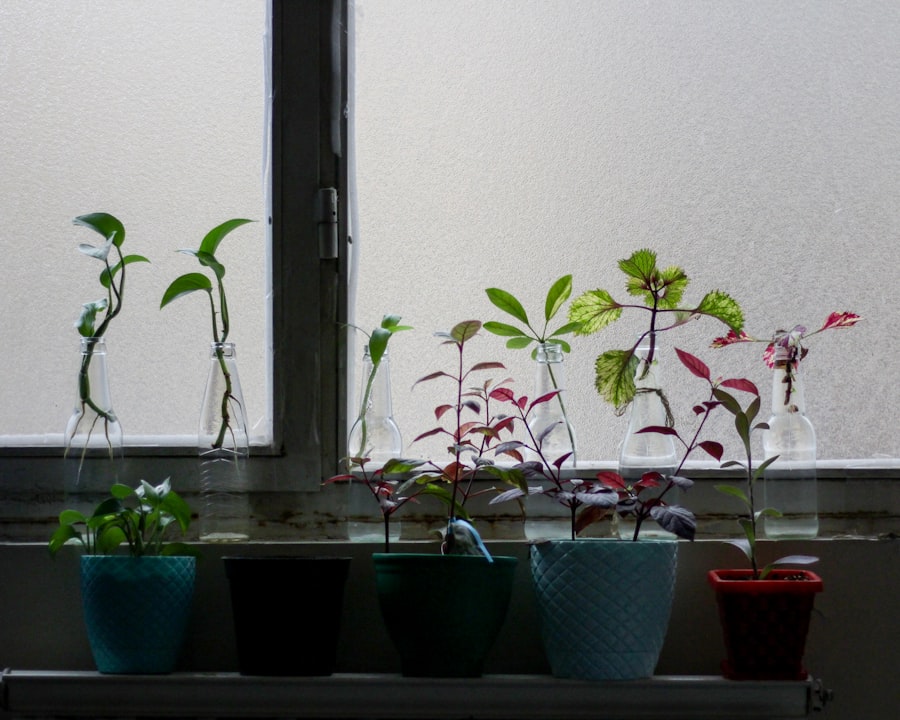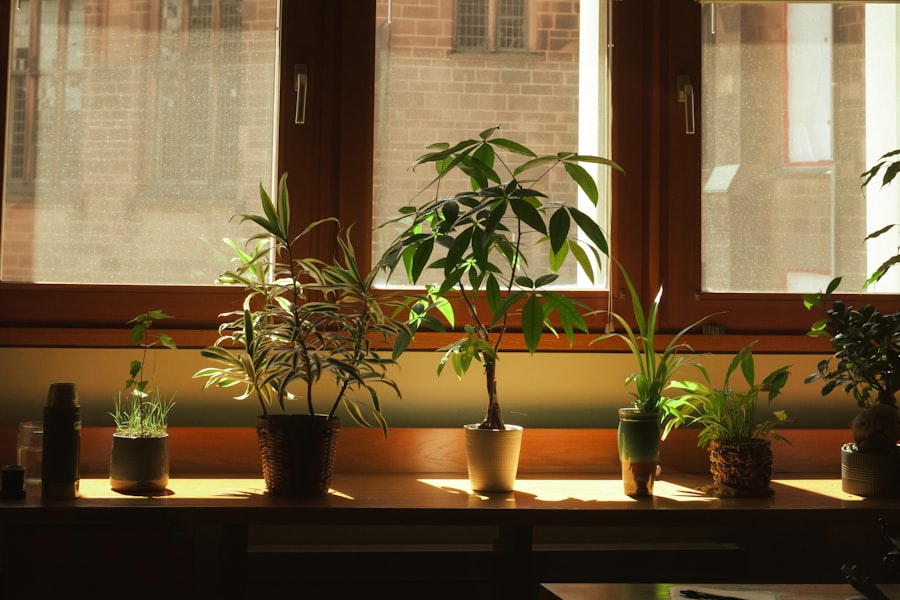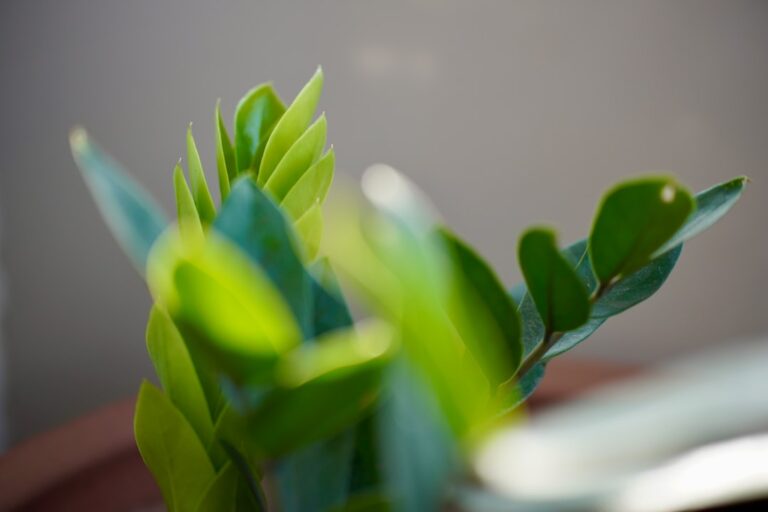Low-light environments are often characterized by limited natural sunlight, which can pose challenges for plant growth. In many urban settings, particularly in condos and apartments, residents may find themselves in spaces with small windows or orientations that do not receive direct sunlight. This lack of light can lead to misconceptions about the types of plants that can thrive in such conditions.
Understanding the nuances of low-light environments is crucial for anyone looking to incorporate greenery into their living spaces. Plants that flourish in low-light conditions have adapted over time to survive with minimal sunlight. These species typically have larger leaves that can capture more light and are often found in the understory of forests, where they receive filtered sunlight.
Recognizing the specific light requirements of various plants is essential for ensuring their health and vitality. By understanding the characteristics of low-light environments, individuals can make informed decisions about which plants to choose for their homes.
Key Takeaways
- Understanding Low-Light Environments: Low-light environments are spaces with minimal natural light, such as north-facing windows or interior rooms.
- Selecting the Right Plants for Low-Light Conditions: Opt for plants that thrive in low-light conditions, such as snake plants, pothos, and peace lilies.
- Care and Maintenance Tips for Low-Light Condo Plants: Water low-light plants sparingly and avoid over-fertilizing to prevent root rot in low-light conditions.
- Utilizing Artificial Light Sources: Supplement natural light with artificial light sources like grow lights to provide adequate light for low-light plants.
- Choosing the Best Containers for Low-Light Plants: Select containers with drainage holes to prevent waterlogged soil and choose pots that complement your condo decor.
Selecting the Right Plants for Low-Light Conditions
When it comes to selecting plants for low-light conditions, there are several species that stand out due to their resilience and adaptability. Snake plants, pothos, and ZZ plants are among the most popular choices for those living in condos with limited light. These plants not only tolerate low light but also require minimal care, making them ideal for busy individuals or those new to plant care.
Their ability to thrive in less-than-ideal conditions makes them perfect companions for urban dwellers. In addition to these well-known options, there are many other plants that can flourish in low-light environments. Peace lilies, for instance, are not only beautiful with their elegant white blooms but also effective at purifying indoor air.
Similarly, cast iron plants and ferns can add a lush, green touch to any space while requiring little sunlight. By exploring a variety of low-light plant options, condo residents can create a diverse and vibrant indoor garden that enhances their living environment.
Care and Maintenance Tips for Low-Light Condo Plants

Caring for low-light plants involves understanding their specific needs and adjusting care routines accordingly. One of the most important aspects of plant care is watering. In low-light conditions, plants tend to require less frequent watering than those in brighter environments.
Overwatering can lead to root rot, a common issue that can quickly jeopardize plant health. It is advisable for plant owners to check the soil moisture before watering, ensuring that the top inch of soil is dry before adding more water. Fertilization is another critical component of plant care that should be approached with caution in low-light settings.
Many low-light plants do not require as much fertilizer as their sun-loving counterparts. A diluted liquid fertilizer applied during the growing season can provide essential nutrients without overwhelming the plant. Additionally, regular dusting of leaves helps improve photosynthesis by allowing more light to penetrate the foliage.
By following these care tips, condo residents can maintain healthy and thriving low-light plants.
Utilizing Artificial Light Sources
| Artificial Light Source | Energy Consumption (Watts) | Color Temperature (Kelvin) |
|---|---|---|
| Incandescent Bulb | 60 | 2700 |
| Fluorescent Tube | 36 | 3500 |
| LED Bulb | 10 | 5000 |
For those who find their condo lacks sufficient natural light, artificial light sources can be a game-changer. Grow lights come in various forms, including fluorescent, LED, and incandescent bulbs, each offering different benefits depending on the needs of the plants. LED grow lights are particularly popular due to their energy efficiency and ability to emit specific wavelengths of light that promote plant growth.
By strategically placing these lights near low-light plants, residents can simulate a more favorable growing environment. Incorporating artificial light into a plant care routine requires some planning. It is essential to determine how much light each plant needs and adjust the duration and intensity of artificial lighting accordingly.
Most low-light plants benefit from around 12-14 hours of light per day, which can be achieved through timers that automate the lighting schedule. By utilizing artificial light sources effectively, condo dwellers can expand their plant options and create a thriving indoor garden regardless of natural light limitations.
Choosing the Best Containers for Low-Light Plants
Selecting the right containers for low-light plants is an often-overlooked aspect of indoor gardening. The choice of pot can significantly impact a plant’s health and growth potential. Containers should have adequate drainage holes to prevent water from accumulating at the bottom, which can lead to root rot.
Additionally, choosing pots made from breathable materials like terracotta can help regulate moisture levels and promote healthy root development. Aesthetics also play a role in container selection, especially in a condo setting where space is limited. Opting for stylish pots that complement the decor can enhance the overall ambiance of the living space.
Hanging planters or wall-mounted containers can save floor space while adding visual interest. By carefully considering both functionality and design, condo residents can create an attractive display of low-light plants that thrive in their chosen containers.
Common Mistakes to Avoid When Growing Low-Light Plants

Even seasoned plant enthusiasts can make mistakes when it comes to caring for low-light plants. One common error is assuming that all plants labeled as “low-light” will thrive in complete darkness. While these plants are more tolerant of shade than others, they still require some indirect light to survive.
Placing them in a completely dark corner may lead to stunted growth or even death. Another frequent mistake is overwatering, which is particularly tempting when caring for low-light plants that may appear dry on the surface. It is crucial for plant owners to develop a keen sense of when their plants need water by checking soil moisture levels regularly.
By avoiding these common pitfalls and educating themselves about the specific needs of their plants, condo residents can foster a healthier indoor garden.
Benefits of Low-Light Condo Plants
Incorporating low-light plants into a condo offers numerous benefits beyond mere aesthetics. One significant advantage is improved air quality; many low-light plants are known for their air-purifying properties, helping to filter out toxins and enhance indoor air freshness. This is particularly beneficial in urban environments where air quality may be compromised due to pollution.
Additionally, having greenery indoors can positively impact mental well-being. Studies have shown that interacting with plants can reduce stress levels and promote feelings of tranquility and happiness. The presence of low-light plants can create a calming atmosphere within a condo, making it a more inviting and relaxing space for residents and guests alike.
Creative Ways to Display Low-Light Plants in a Condo
Displaying low-light plants creatively can transform a condo into a vibrant oasis filled with life and color. One popular method is using vertical gardens or living walls, which allow residents to maximize space while showcasing an array of plants. These installations not only serve as eye-catching decor but also contribute to improved air quality and humidity levels within the home.
Another innovative approach is incorporating plants into furniture or decor items. For instance, using plant stands or shelves specifically designed for displaying greenery can add dimension to a room while keeping surfaces clutter-free. Hanging planters from ceilings or walls can also create an enchanting atmosphere while drawing the eye upward, making spaces feel larger and more open.
Troubleshooting Common Issues with Low-Light Plants
Despite careful attention and care, low-light plants may still encounter issues that require troubleshooting. One common problem is yellowing leaves, which can indicate overwatering or insufficient light exposure. If leaves begin to turn yellow, it is essential for plant owners to assess their watering habits and consider relocating the plant to a brighter spot if possible.
Pest infestations can also pose challenges for indoor gardeners. Common pests such as spider mites or aphids may find their way onto low-light plants, leading to damage if left unchecked. Regularly inspecting plants for signs of pests and taking prompt action—such as using insecticidal soap or neem oil—can help mitigate these issues before they escalate.
Low-Light Plant Options for Different Condo Spaces
Different areas within a condo may present unique challenges and opportunities for incorporating low-light plants. For instance, bathrooms often provide ideal conditions for humidity-loving plants like ferns or peace lilies due to their moisture-rich environment. These plants not only thrive in lower light but also benefit from the humidity generated by showers.
Living rooms or bedrooms may require more versatile options that complement various decor styles while still thriving in lower light conditions. Snake plants or pothos are excellent choices for these spaces due to their adaptability and striking appearance. By selecting appropriate plant species based on specific areas within the condo, residents can create harmonious arrangements that enhance both aesthetics and functionality.
Incorporating Low-Light Plants into Condo Decor
Integrating low-light plants into condo decor involves more than just placing them on windowsills or tables; it requires thoughtful consideration of design elements and spatial arrangement. Using color-coordinated pots or planters that match existing decor can create a cohesive look throughout the space. Additionally, grouping plants together in clusters can add visual interest while maximizing their impact.
Incorporating natural materials such as wood or stone into plant displays can further enhance the organic feel of indoor gardens. For example, using reclaimed wood shelves or stone planters can create an earthy aesthetic that complements the greenery beautifully. By thoughtfully integrating low-light plants into condo decor, residents can cultivate an inviting atmosphere that reflects their personal style while celebrating nature indoors.
If you’re looking to enhance your condo with greenery but are concerned about low light conditions, you might find inspiration in related topics that focus on optimizing your living space. While exploring the best plants for such environments, it’s also beneficial to stay informed about broader lifestyle topics. For instance, keeping up with current events and trends can provide a well-rounded perspective on how to make the most of your living situation. A great resource for staying updated is Diario NY, which offers a wealth of news and information to keep you informed and inspired.
FAQs
What are condo-friendly plants?
Condo-friendly plants are indoor plants that are well-suited for growing in small spaces, such as condominiums or apartments. These plants are typically low-maintenance, compact, and can thrive in low light conditions.
What are low light conditions?
Low light conditions refer to areas in a home or building that receive minimal natural sunlight. This can include rooms with small windows, north-facing windows, or areas that are shaded by nearby buildings or trees.
What are some plants that thrive in low light conditions?
Some plants that thrive in low light conditions include snake plants, pothos, peace lilies, spider plants, ZZ plants, and philodendrons. These plants are known for their ability to tolerate and even thrive in low light environments.
How can I care for condo-friendly plants in low light conditions?
To care for condo-friendly plants in low light conditions, it’s important to water them sparingly, as they will not dry out as quickly in low light. Additionally, you can rotate the plants occasionally to ensure even growth, and consider using a humidifier to maintain proper moisture levels.
Can condo-friendly plants improve indoor air quality?
Yes, many condo-friendly plants are known for their air-purifying properties. They can help remove toxins and improve air quality in indoor spaces, making them a beneficial addition to any condo or apartment.






